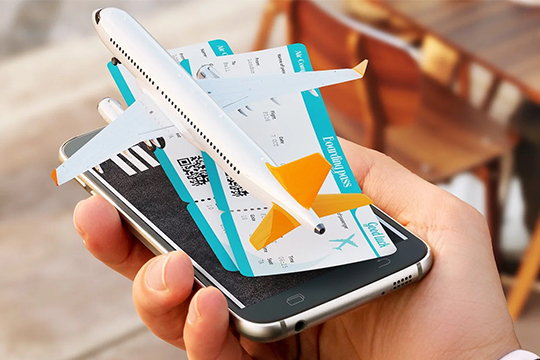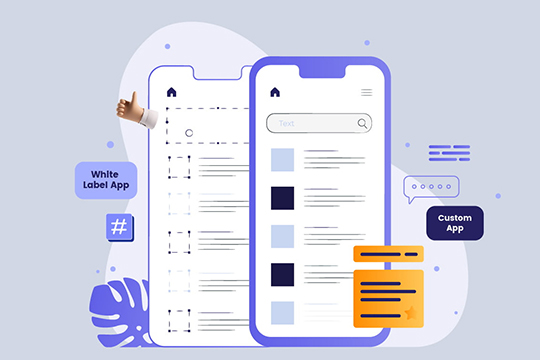How to Build an App Like TripPlanner
Travel planning has been transformed in the age of digital ease by smartphone apps that help consumers plan and manage…
Fitness has become a priority for many people in today’s fast-paced world, and the need for mobile apps to help us achieve our fitness goals has never been greater. With Flutter development, it is now easier than ever to create a fitness app that is both aesthetically pleasing and highly functional.
In this article, we will look at the fundamentals of fitness app design and how to use Flutter to implement workout tracking features. the way we see it, the way we see it.
There is something in the sky, so there is something to be excited about. It makes use of the Dart programming language, which is intended to be simple to learn and use for developers of all skill levels. Flutter enables developers to create native-like user interfaces that provide users with a smooth and responsive experience. It also provides a wide range of pre-built widgets and tools for building custom UI elements, animations, and graphics.
One of Flutter’s main advantages is its hot-reload feature, which allows developers to see changes to their code in real-time without having to restart the entire app. This speeds up and improves the development process. Flutter has become a popular choice for mobile app developers all over the world due to its flexibility, ease of use, and powerful features.
Flutter provides a set of development tools that make app development faster and more efficient. Some of the most popular Flutter development tools are as follows:
A Flutter fitness app is a mobile application that helps users track their fitness activities, track their progress, and reach their fitness goals. The term “clutter” refers to the state of a website’s content. Developers can use Flutter to create engaging and interactive fitness apps that offer users a personalised workout experience, customised nutrition plans, and real-time tracking of their activities.
These apps frequently include features like step tracking, calorie tracking, heart rate monitoring, and workout tracking. Anyone looking to stay motivated and focused on their fitness journey will benefit greatly from a Flutter fitness app.
There are several essential features that should be included when designing a fitness app in Flutter to ensure a great user experience. Here are some of the most important features for designing a fitness app in Flutter:
By including these essential features in fitness app design, developers can create engaging and useful fitness apps that provide a great user experience and help users achieve their fitness goals.
Ndimension Labs is a software development firm that offers complete solutions for creating dynamic fitness apps with Flutter.
Gathering requirements – The Ndimension Labs team collaborates closely with clients to gather requirements, understand their needs, and identify the features and functionalities that are critical to the app’s success.
Design and UI/UX – Ndimension Labs’ team of designers and UI/UX experts collaborate to create a user-friendly interface with quick access to key features like tracking, workout plans, nutrition tracking, and personalised coaching.
Ndimension Labs’ development team creates the app using Flutter’s built-in widgets and UI components, incorporating essential features such as workout tracking, nutrition tracking, progress tracking, and social sharing.
Ndimension Labs’ QA team thoroughly tests the app to ensure that it meets the clients’ requirements, functions as expected, and provides a seamless user experience.
Ndimension Labs assists clients with app deployment and maintenance on their preferred platforms, such as Google Play and Apple App Store. They also offer ongoing maintenance and support to ensure that the app runs smoothly and meets the changing needs of their clients.
Finally, creating a dynamic fitness app with Flutter can assist users in achieving their fitness goals as well as improving their overall health and well-being. Workout tracking, nutrition tracking, progress tracking, and personalised coaching are all features that can help users stay motivated and committed to their fitness routine.
Ndimension Labs specialises in developing dynamic fitness apps with Flutter, providing end-to-end solutions that meet clients’ needs and provide a consistent user experience. We understand the needs of our clients and identify the features and functionalities that are critical to the app’s success by working closely with them. Our team of designers, developers, and quality assurance experts collaborate to create a user-friendly interface that incorporates essential features and functionalities that assist users in reaching their fitness goals.
Contact us at Ndimension Labs if you want to create a dynamic fitness app with Flutter. Our experts will collaborate with you to understand your needs and provide end-to-end solutions that meet and exceed your expectations. Let’s revamp your fitness routine with Flutter and help you achieve your fitness goals!

Travel planning has been transformed in the age of digital ease by smartphone apps that help consumers plan and manage…

Introduction Mobile apps are now essential tools for tourists looking for speed, efficiency, and customised experiences in the fast-paced world…

Introduction Mobile applications, which meet a variety of requirements and interests, have become an essential part of our lives in…